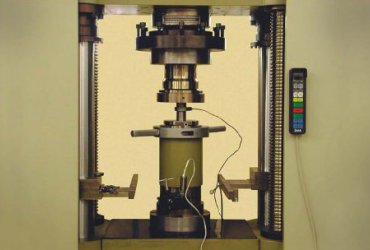Rock properties and petrology
Properties of rocks, coal and construction materials are studied from point of view of both petrography, structure and texture (using optical microscopy and image analysis), and physical properties. Changes of physical properties due to the influence of external effects (such as state of stress, thermal loading) are studied in particular.
Following changes are studied in the process of deformation and failure under uniaxial or triaxial state of stress: ultrasonic wave velocity, strain and strength properties, gas permeability, and acoustic emissions.
Mohr envelopes are plotted and internal friction angles and shear strengths of tested material are determined from measurements under triaxial state of stress that simulate rock mass conditions.
Analysis of the influence of thermal load on petrophysical properties is performed both on tempered samples and in the course of tempering. Dehydration, dissociation, dehydroxilation, polymorphous transformations and development of new phases during heating is studied using differential thermal analysis and thermogravimetry. Thermal dilatation of rocks is determined with the aid of thermomechanical analysis.
Density, moisture, absorptive capacity, thermal conductivity, heat capacity, and abrasivity are examples of other analyses and tests performed on geomaterials.
Structure changes in tested material are observed on fractured samples after experiments and/or after tempering to determine character of microfracturing (i.e. intensity and orientation of discontinuities).




